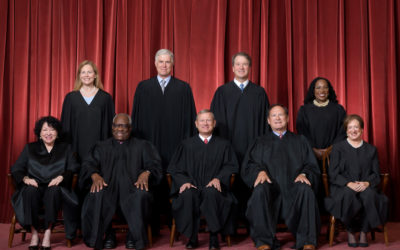I am passionate about fair representation in The House of Representatives. I have a two part plan to achieve this goal. The first part is to expand the number of House Seats to reflect the growing population of America. The second part is a specific and airtight way to restrict partisan gerrymandering. Achieving both goals can be done by using an unorthodox system, some might even call it controversial, known as math.
According to the 2020 census, California’s population was 39,538,223. This was an increase of more than 2 million residents. Despite the population increase, California LOST one seat in The House. Four other states lost a seat in The House after the 2020 census despite an increase in population: Michigan, Pennsylvania, New York and Ohio.
The House of Representatives, in its original design, was meant to serve America’s population. The House has expanded many times since the Constitution was created. However, it has not expanded from 435 members since the Reapportionment Act of 1929. That was nearly 100 years ago! America’s population has grown exponentially since then and it will continue to grow.
After the 1930 census, America’s population was 114 million people. That meant each member of The House of Representatives, on average, served roughly 262,000 residents in their district. The population of America after the 2020 census was 331 million. Now each member of The House of Representatives, on average, serves nearly 761,000 residents. Without expansion, that growing gap between Representatives and the number of their constituents is only going to get more exacerbated.
I have devised a formula, based on a state’s population growth, that would expand The House reasonably after each census. An important element that I have eliminated is that no state would lose seats in The House unless their population decreases.
When it comes to eliminating partisan gerrymandering, I like to use Utah as an example. Utah’s 2020 population was counted at around 3.2 million people. The state was apportioned 4 seats in the House of Representatives. That meant each House District would have roughly 800,000 residents. Salt Lake County – the largest county in the State and the location of the state Capital, Salt Lake City – has 1.1 million residents. With 800,000 residents per House District, one district could easily be drawn within the borders of Salt Lake County. This would preserve the communities through fair representation in The House. That is not what the state legislatures of Utah did.
The Utah State legislatures – controlled by Republicans – drew a map that split Salt Lake County in such a way that ALL FOUR of Utah’s House Districts contained portions of Salt Lake County within its borders. If one district had been accurately drawn within the borders of Salt Lake County, that district would likely be represented by a Democrat. By splitting the county into being part of 4 different districts, they ensured that only Republicans could be elected to the House of Representatives. Republicans have used this tactic of splitting communities at the county level to eliminate Democrats from being fairly elected in Texas, Florida, Georgia, North Carolina, Tennessee and Ohio. That is unfair, undemocratic and un-American.
For the sake of accuracy and balance, the Democrats of Illinois use similar tactics in how they draw their House Districts. Cook County is so populous that 7 House Districts can easily be drawn within the county’s borders. But the Democrats have drawn 9 districts that feature part of Cook County and only 1 District within the county borders. Their method of map drawing means a guaranteed 3 extra Democrats in The House.
I asked Richard Fallon, a Harvard Law professor, about my idea for limiting what can be done to combat gerrymandering. His response: “In Rucho v. Common Cause, in which the Supreme Court held that the federal courts cannot halt partisan gerrymandering, Chief Justice Roberts wrote ‘The Framers gave Congress the power to do something about partisan gerrymandering.’”
In other words, my idea is Constitutionally sound. Congress can control partisan gerrymandering.
The House of Representatives cannot continue being set at 435 members and allow state legislatures to disenfranchise voters through gerrymandering. I am running to Represent California’s 41st District to fight for fair representation.



